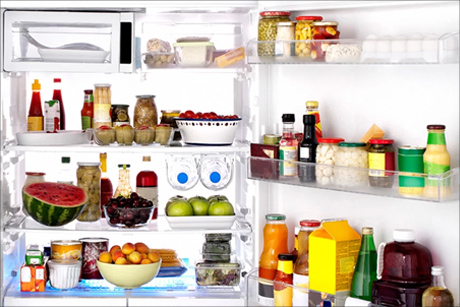
Nothing makes weeknight dinners easier than having a fridge fully stocked with a variety of delicious possibilities. Purchasing meats and seafood on sale can save you a lot of money in the long term. But before you fill your cart full of groceries, read this simple guide on safety practices for keeping eggs, poultry, beef and more.

Eggs
Whole eggs are one of the top contenders when it comes to having a long shelf life. They will keep safely in the fridge for a full 5 weeks. Over time, eggs take in air, which pushes the white away from the shell making it extremely easy to peel — a bonus for deviled egg lovers!
Liquid, pasteurized eggs may seem more convenient, but they have a shorter shelf life. Once opened, they need to be used within 3 days. Regardless of the type of egg you purchase, they should never be stored in the freezer.
Beef
When you buy fresh, ground beef, you don’t have long to cook it, as it has to be consumed within 2 days of purchasing. Other cuts of beef, such as steaks or roasts, are a bit more forgiving; they can be kept in the fridge for up to 5 days.
Freeze it: To extend the shelf life, freeze any type of beef in a tightly sealed container. Ground beef can be used within 4 months, and all other cuts can be kept for up to 12 months.
Cook it: From a rich Bolognese to a saucy stew, if you like to make big-batch meals with beef, they can be cooked and safely stored in the fridge for 3 to 4 days, and the freezer for up to 3 months. Just make sure to transfer any hot food into small, shallow containers to ensure it cools quickly, which prevents bacteria from growing.
Pork
It’s hard to grocery shop without picking up a package of the ever-beloved bacon and luckily, you have a full week to safely consume it. Fresh sausage and ground pork are also delicious options, however, they should both be cooked within 2 days of purchasing. Other cuts of pork, such as chops, can be consumed within 5 days.
Freeze it: Freeze any pork in a tightly sealed container. Bacon will keep for up to a month, fresh sausages and pork for up to 2 months and other cuts for up to 6 months.
Cook it: Cooked pork of any kind can be safely stored in the fridge for 3 to 4 days and the freezer for up to 3 months.
Poultry
Poultry is a great staple for delicious and affordable meals. From chicken to turkey and quail, all fresh poultry should be consumed within 2 days of purchasing.
Freeze it: Freeze any poultry in a tightly sealed container. Individual cuts, such as breasts or thighs, can be used within 9 months and whole poultry, such as chicken, can be kept for an entire year.
Cook it: Cooked poultry can be safely stored in the fridge for 4 days and the freezer for up to 4 months.
Lunch Meats
Your sandwich meats should be consumed within 4 days of purchasing. If you’re looking for something that will last the full week, try buying cured meats, such as summer sausage, which can be kept in the fridge for up to 3 weeks.
Freeze it: Freeze any lunch meats in a tightly sealed container for up to 2 months.
Seafood
Whether it’s trout, haddock, spot prawns or lobster, all fresh fish and shellfish should be consumed within 2 days of purchasing. However, smoked fish has a longer shelf life and can be kept for up to 14 days.
Freeze it: Freeze any fish or shellfish in a tightly sealed container. Fatty fish, such as mackerel, along with any shellfish or smoked fish will keep for up to 2 months and leaner fish, such as sole, will keep for up to 6 months.
Cook it: All cooked fish can be safely stored in the fridge for up to 4 days and the freezer for 4 to 6 months.
*Note: Always remember you can never re-freeze any food that has previously been frozen, regardless of the type of meat or seafood.
